
Download the PDF of this article
The home corner is an essential area for good reason – it’s where children feel comfortable and is a familiar environment where they can re-enact what is going on in their homes and start to make sense of their world. Practitioners at Cullompton Pre-school in Devon saw this taken to a different level when children decided to move house.
‘We had been observing the children’s use of the home corner and decided to set it up in a different part of the pre-school because the children accessing the area and the way they were playing in it had become very fixed,’ explains pre-school leader and early years teacher Amelia Joyner.
‘We moved it to the middle of the pre-school near a main thoroughfare and added in real objects such as pots and pans, cutlery and large dinner plates. This had the desired result of different children using the area and extending the way that regular users played in there.’
Relocating and reinvigorating the home corner led to more non-verbal two-year-old boys engaging in play in the area along with a group of older girls who were already established in family role play but whose play had become repetitive.
Along with the real home items, practitioners added resources to promote literacy, such as cook books and recipe cards – with children enjoying making up their own recipes. And to create opportunities for numeracy, they added such items as weighing scales, old mobile phones and remote controls for a home-made TV.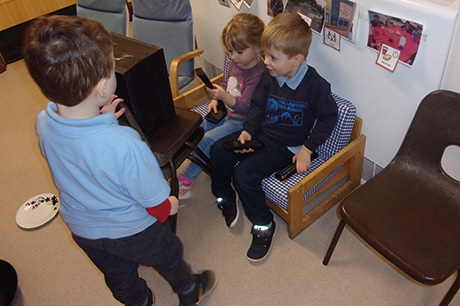
ON THE MOVE
Included in the group of two-year-old boys was one whose family had been on a housing association exchange list for some time.
The home corner had been in the new area for a couple of weeks when Ms Joyner saw one of the boys lurch towards her hauling six big dinner plates. ‘I went to see what he was doing and he told me that he was moving,’ she recalls.
‘Soon he had a couple of girls on board to help him and in the end around nine children all helped to move every item of the home corner bit by bit to another area of the pre-school where they had set up chairs as a “bus house”.’
She wonders whether the ‘bus house’ was inspired by another child whose father is in the process of converting a van into a home in order to live off-grid. It also coincided with children making and playing bus- and train-themed games.
Instead of intervening in the activity, Ms Joyner decided to simply observe because the children were working really well together.
‘The children were in the flow of exploration themselves. I could see the older children giving ideas to the younger children and helping to do things, such as put the home corner resources in neat piles,’ she says.
‘We like to encourage British Values by encouraging children to listen to other people’s views and I could see how well that was working. Even the younger children were saying where they wanted to put things and everyone was helping. They worked together and moved all the home corner items.
‘I could tick off many of the characteristics of learning – high motivation, perseverance, thinking of their own ideas and finding ways to solve problems were all evident – as well as literacy and numeracy as they described to each other what they were doing and counted the piles of items.’
Some of the household items went into a box or were carried in pans but the majority were moved in armfuls, with children going backwards and forwards for more than 30 minutes.
‘The children came from a broad spectrum across the pre-school cohort and I could see them working collaboratively and taking care of each other as they waited, took turns, shared their views and listened,’ says Ms Joyner.
‘I could hear one child who lives in two houses comment how she needed to put some things in her mummy’s house and others in her daddy’s house. Another asked their friend whether it was OK to touch the kettle while I overheard another comment that they had the same story book at home.’
The children organised the items in their ‘bus house’ on the different chairs. ‘I made some comments to extend the children’s language and imagination such as, “Do you still live near pre-school?”, “I wonder who will share a room?” and “Where will you cook your tea?”, but it was very much child-led and not their normal home-corner play.
‘They left the reorganisation to go for lunch and a few children returned to the bus house after they had eaten, but not with the same degree of purpose,’ recalls Ms Joyner.
After moving house, the children’s play followed more of a bus theme as they went on pretend trips and made bus tickets.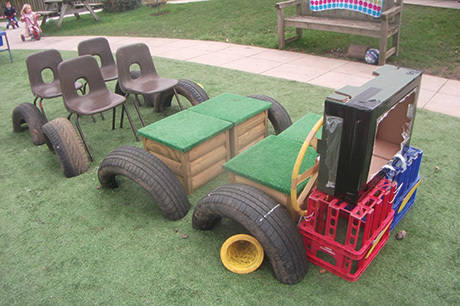
SAFE AND SECURE
‘We feel that playing out the scenario of moving house really helped the boy I mentioned to make sense of the process and understand his feelings of excitement, anticipation and some anxiety in a safe environment,’ says Ms Joyner.
‘We have a lot of disadvantaged children, and we feel the home corner is a safe and secure area for children to explore their feelings while playing with familiar objects and scenarios.’
Key workers liaise closely with their families in order to understand what the children are experiencing at home. They are aware that there are more children waiting to exchange homes so they plan on returning to the theme of moving home. It may coincide with them looking at similarity and difference, and they are considering asking children to bring in photos of their homes, including ones that they used to live in.
The boy who initiated the house move has since moved home with his family and has shared photos of his new bedroom. ‘The move has been a big improvement for the whole family and we can see how much calmer and relaxed he now is,’ says Ms Joyner.
She adds, ‘It was really special to see the purposeful nature of the children’s play that day. I saw great pride and satisfaction in what they had achieved.’
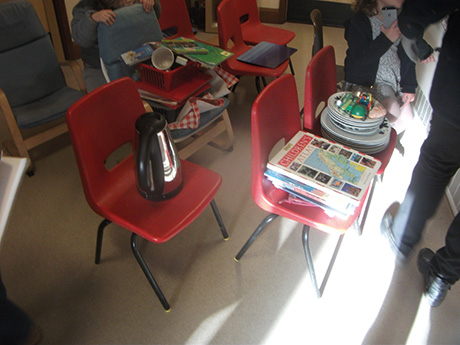
BOOK CORNER
 A New Room for William
A New Room for William
by Sally Grindley and Carol Thompson
William moves house with his mum but he doesn’t like his new bedroom or garden and wants to go back to his old house. Choosing dinosaur wallpaper cheers him up and he is soon excited to plan his room at his dad’s home too.
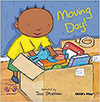 Moving Day
Moving Day
by Jess Stockham
A reassuring story for young children about packing up and moving home.
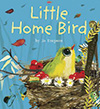 Little Home Bird
Little Home Bird
by Jo Empson
Little bird loves everything about his home – from his favourite branch to the view – so why should he move even when his brother says they must?
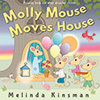 Molly Mouse Moves House
Molly Mouse Moves House
by Melinda Kinsman
Molly Mouse is homeless and afraid after losing her tree-trunk home. Then her forest friends come to her aid in this reassuring rhyming picture book.
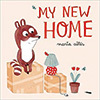 My New Home
My New Home
by Marta Altes
Moving to a new home can feel scary and a little bit lonely, but this little racoon soon discovers that wherever you go, adventures soon follow.
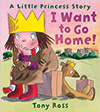 I Want to Go Home!
I Want to Go Home!
by Tony Ross
The Little Princess isn’t happy with her new castle and wants to go to her old one, only to find that new people live there and it doesn’t feel like home now.
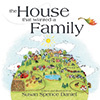 The House that Wanted a Family
The House that Wanted a Family
by Susan Spence Daniel
Told from the perspective of a house that’s for sale and waiting for a new family to love it.
 We’re Moving House
We’re Moving House
by Heather Maisner and Kristina Stephenson
Amy and Ben are sad to have moved house and miss their friends, but they find happiness in their new home.
 Moving Molly
Moving Molly
by Shirley Hughes
Molly wished that they had a real garden, big enough to play in. One day her wish comes true and the family move house.









